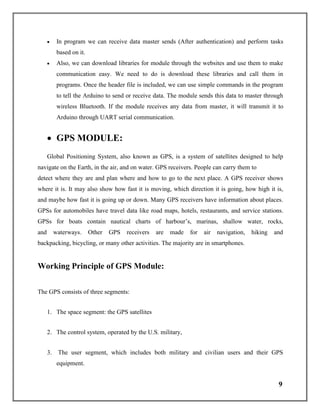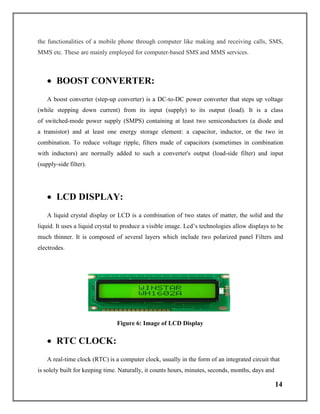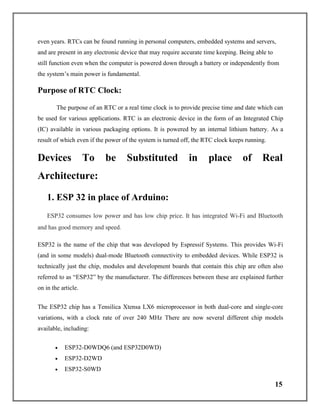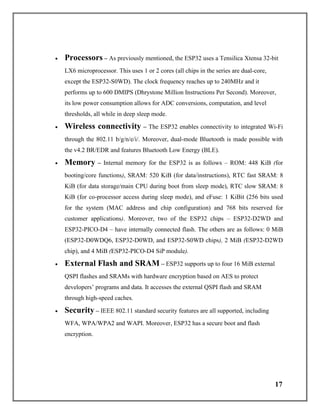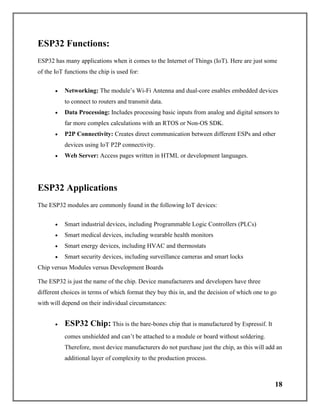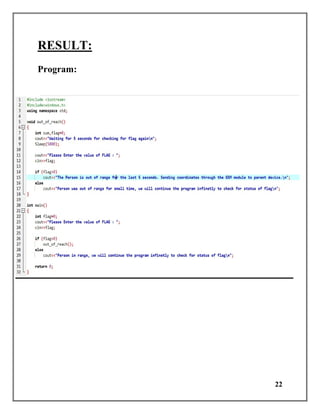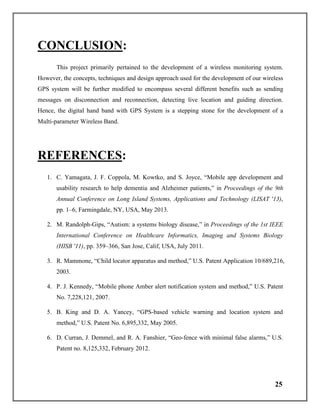This document is a thesis submitted for the degree of Bachelor of Technology in Electronics and Communication Engineering at Maulana Abul Kalam Azad University of Technology. It describes the development of a GPS enabled location tracking digital band by a group of five students - Aditi, Akash Shaw, Dona Chakraborty, Durba Kundu, and Subhrojyoti Das - under the supervision of Prof. Tarun Kumar Das at Future Institute of Engineering & Management. The thesis includes certificates of recommendation, approval, acknowledgement, index, and literature survey sections. It aims to design a wireless and portable location tracking system using a microcontroller interfaced with a GPS module and Bluetooth to allow caregivers
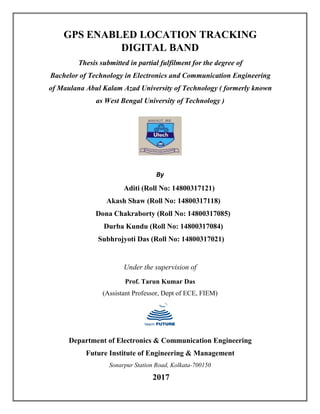




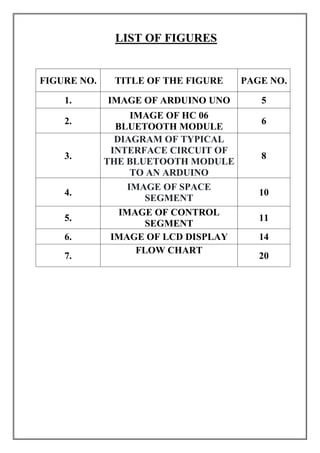


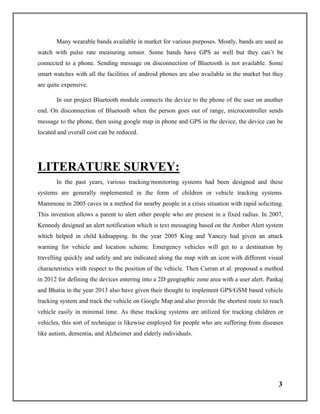


![6
Figure 2: Image of HC 06 BLUETOOTH MODULE
Pin configuration:
HC-06 module has six pins as shown in the pinout. In them we only need to use four for
successfully interfacing the module. Some breakout boards will only leave four output pins only
because of this reason.
Pin Number Name of the
Pin
Function
1 Key The pin state determines whether the module
works in AT command mode or normal mode
[High = AT commands receiving mode
(Commands response mode), Low or NC =
Bluetooth module normally working].
2 Vcc +5V Positive supply needs to be given to this pin
for powering the module
3 GND Connect to ground
4 TXD Serial data is transmitted by module through this
pin (at 9600bps by default), 3.3V logic
5 RXD Serial data is received by module through this
pin (at 9600bps by default),3.3V logic
6 State The pin is connected to the LED on the board to
represent the state of the module](https://image.slidesharecdn.com/finalyearprojectreportfinalsem-221125124543-56484222/85/Final-year-project-report-final-sem-pdf-12-320.jpg)
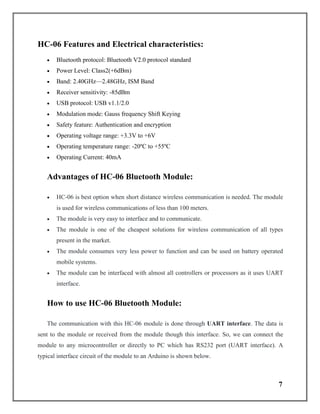
![8
Figure 3: Diagram of typical interface circuit of the Bluetooth module to an Arduino
Here the module is connected to +5V standard regulated power supply and UART
interface is established as shown in figure. We need to do is connect RXD of Arduino to TXD of
module and TXD of Arduino is connected to RXD of module through a resistor voltage divider.
This voltage divider is provided for converting 5V logic signal sent by Arduino to +3.3V logic
signals which are suitable for the module. The ground of Arduino and module must be connected
for voltage reference in case separate power sources are used.
After connecting the module, we have to write the program in Arduino IDE to receive and
send data to the module. For successful wireless communication we need to remember few
things:
In programming we need to set default baud rate of UART serial communication to 9600.
The value is default setting of module and can be change in program.
The module is a slave and so we need a master to establish a successful wireless interface.
For that we need another [Arduino + module (with master feature)] setup or we can use a
smart phone as a master and search for HC-06 slave.
The master searches for slave and connects to it after authenticated with password. The
HC-06 module has default password ‘1234’ which can be changed.](https://image.slidesharecdn.com/finalyearprojectreportfinalsem-221125124543-56484222/85/Final-year-project-report-final-sem-pdf-14-320.jpg)
